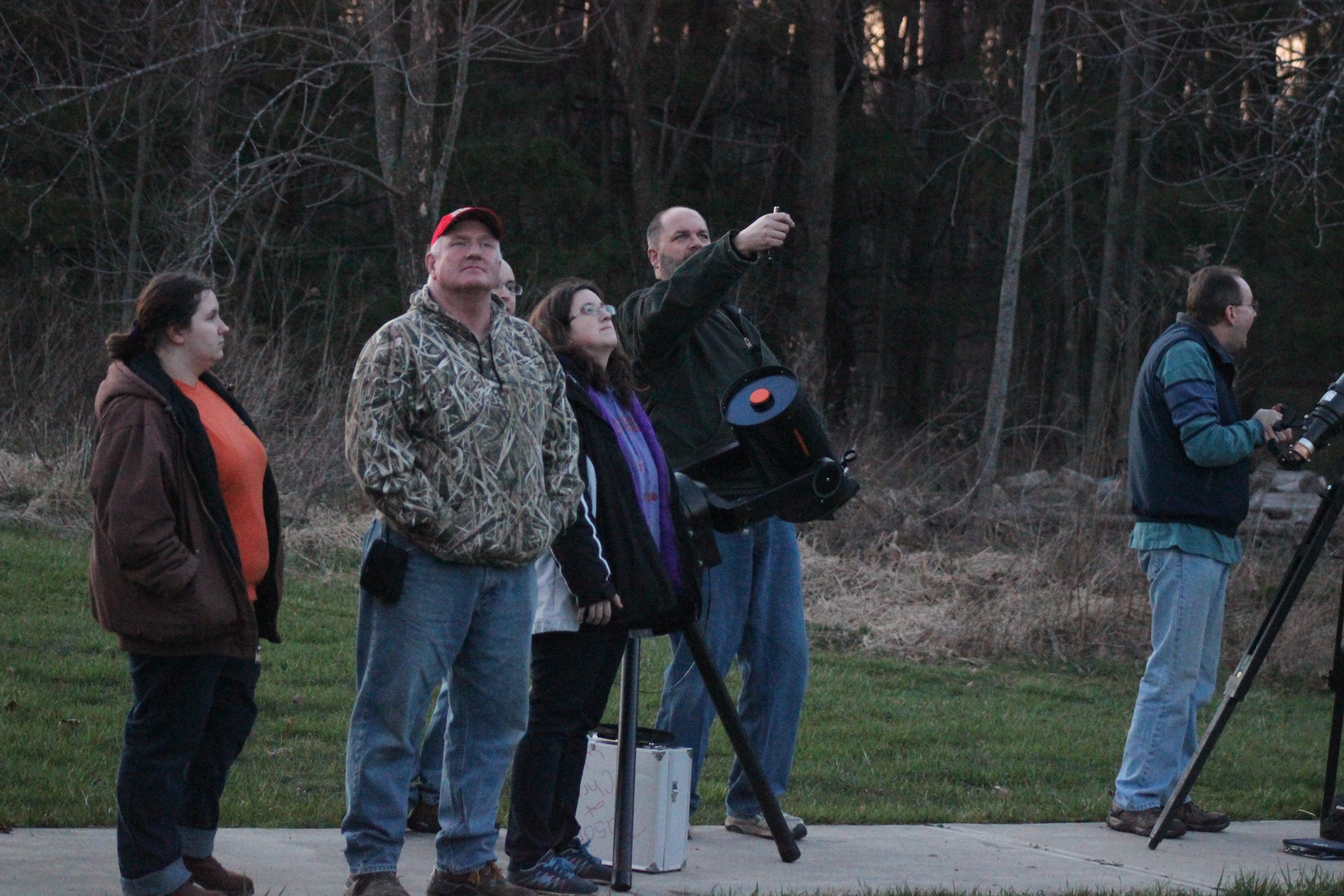By Bob Strohm
bstrohm@wbcowqel.com
Stargazers had optimal conditions Saturday night to see the celestial bodies in the sky. Taking full advantage of the clear skies the Lowe-Volk Park Astronomy Club held its monthly program Viewing the Night Sky.
With the sun setting over Lowe-Volk Park, members of the Lowe-Volk Park Astronomy Club assembled their telescopes and pointed them skyward. While setting his telescope up Dan Everly explained what was going to be viewed Saturday evening.
“We are going to go for Jupiter which should be very good tonight, we are going to see some moons, see some banding which is the cloud tops,” Everly said. “We are going to go for the Beehive Cluster, and Polaris and show that it is a binary star, plus a few other objects around.”
Prior to dusk giving way to the darkness of night, many of the Lowe-Volk Park Astronomy Club members had Jupiter along with four moons of the gaseous planet in sight. As attendees viewed the planet and moons through the provided telescopes, numerous volunteers were quick to point out that they were viewing the same moons that Galileo first saw when he viewed Jupiter through his telescope.
As darkness crept across Lowe-Volk Park the constellation Orion became more visible in the south skies. Telescopes were soon directed towards the dagger to view the Orion Nebula. With the nebula in sights those looking through the telescopes were able to view the haze from the gases that compromise the nebula along with two of the stars created within the nebula.
Closing out the night the red giant Betelgeuse, along with the binary star system Alcor, and the quadruple star system Mizar were viewed. Betelgeuse is located within the constellation Orion, while Mizar and Alcor lie within the Big Dipper constellation.
For those wishing to view some celestial sights at home Everly explained a few of the astronomical happenings for the end of March and beginning of April.
“Right now in Scorpio which is due south at about 5 o’clock in the morning we have Comet Green which is going to be a brilliant object,” Everly said. “It is actually split into two pieces. You could actually find it with your binoculars really easily. If you go on the website of Comet Green or Sky and Telescope there is a nice map, and Scorpio is a nice constellation that actually looks like what you are supposed to be looking at. That is a nice early morning object. Beyond that Jupiter is up in the evening, and Saturn and Mars are both in Scorpio also.”
The Lowe-Volk Park Astronomy Club meets at Lowe-Volk Park every fourth Saturday of the month to view the night sky. The public is welcome to attend.


